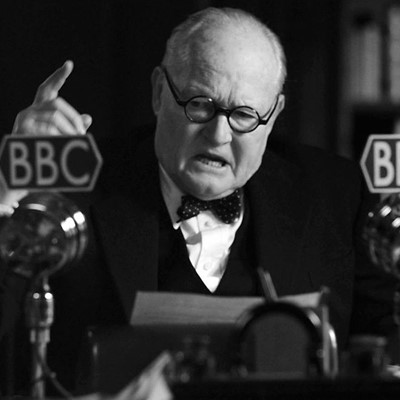
One of a speaker's biggest challenges is shifting away from the way they've always done things. Even when someone is eager to make a change, old habits are hard to break. New ideas are hard to incorporate.
One of the simple yet effective ways you can move more quickly to a new delivery technique, we've found, is to exaggerate it. What do we mean? Here are a few ideas.
For more energy, become 'a wild and crazy guy'
Introverted speakers often tell us they want to bring more animation to talks but struggle to add gestures, body language, vocal variation and facial expressions.
So we ask them to take it over the top—to fire off a gesture for every idea, to make their presentation wildly animated. Sometimes, to ease their discomfort, we even act it out with them.
We reassure them and you: A speaker can always dial it down. View this as a chance to playfully come up with new ways of delivering.
Introverts often discover that what feels "wild" to them appears like a welcome amount of energy to everyone else.
To slow pace, exaggerate pronunciation
Rushing is a problem common to many speakers. Some naturally speak quickly. Others race off when nerves kick in.
Meanwhile, audiences desperately need the speaker to slow down. It's almost impossible for a listener to keep up when a presenter rushes through material.
One way to slow yourself is to enunciate the last letter of every word. It's the rare person who can speak super-fast and do that.
Not only does meticulously ending every word control your pace, it also gives you crisp diction associated with the best speakers. Of course, you can exaggerated in rehearsals, then smooth out your delivery for the actual presentation. You don't want to seem stilted.
But a practice round or two with a commitment to articulating the last letter of every word is a sure way to get pace under control.
To keep gestures in check, weigh your arms down
At The Buckley School, we're fans of descriptive gestures and body language. We love to see speakers use them.
But often times, speakers have random arm movements between purposeful gestures. When that’s the case, we find putting a 10 pound dumbbell in each hand is a great way to make the speaker aware of their movements.
Ideally, when you're presenting without a lectern, hands relax by your sides. As long-time Buckley coach Karen Kalutz says, you let gravity do its thing. But many speakers want to hold hands up and have them hover and clasp mid-torso. Weights are a great way to exaggerate the effects of gravity.
To eliminate uhs and ums, create an overly annoying reminder
Your relentless uh-ing and um-ing is a nuisance to listeners. Make it a colossal nuisance to yourself!
One way you can do that when you practice is to have a a colleague ring a bell or make a noise every time you say it. We worked with a student group who liked to put a book in the arms of the speaker every time they said uh or um, creating a physical representation of the sounds as they piled up.
And of course, graduates of our Executive Seminar can share their fond memories of the dread bucket (one of our "secrets" for curing the habit).
Learn more
For additional tips on how to get the uh and um out of your speech, see this.
Find our how-to guide for using gestures in a presentation.
Go here to learn about an amazing speaker who masterfully articulates every word.






